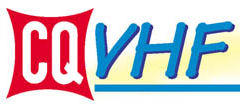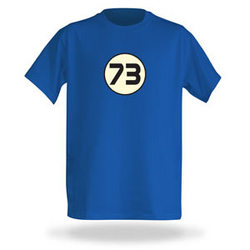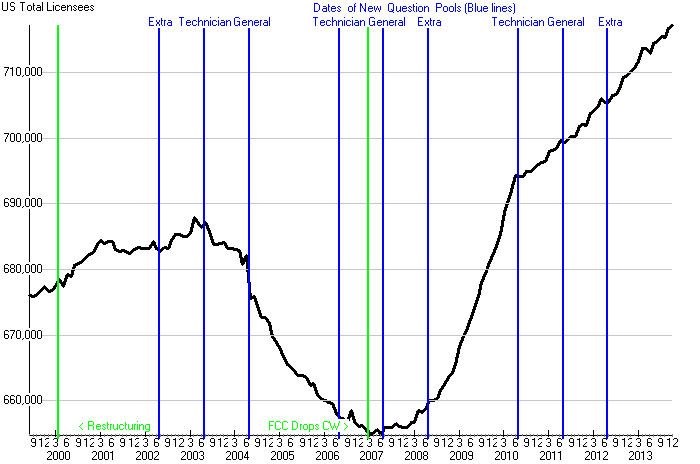Author Archive
 What? A Record Level of US Ham Licenses?
What? A Record Level of US Ham Licenses?
The ARRL just reported that the number of FCC amateur radio licenses hit an all time high of 717,201 at the end of 2013. Since we all know that the interwebz has made ham radio communication obsolete :-), this is a difficult statistic to comprehend. Joe Speroni AH0A keeps a useful collection of ham licensing statistics including the ability to generate plots of the data. I used Joe’s site to generate this plot of total US amateur licenses versus time. Note that the vertical axis does not start at zero, so the plot tends to exaggerate the amount of change.
From this plot, we see that the number of licenses was in decline from about 2003 to 2007. The no code Technician license was introduced in 1991 which is earlier than the data on this chart. The FCC completely dropped the Morse Code requirement from all license classes in 2007, as indicated on the chart. (See Wikipedia for the exact dates.) The decline in licenses was reversed at that time and has been growing ever since. There is an interesting inflection point in 2010 that coincides with the release of a new Technician License question pool. The line is noticeably less steep after this point, which seems to imply that something happened to slow down the rate of new licenses.
Over the last ten years, Technician licenses have grown slightly as a percent of the total, going from 47% to 49%. So about half of US licenses are Technician. The grandfathered Novice and Advanced class licenses are in a slow decline and currently represent 2% and 8% (respectively) of the total licenses. The percent of General licenses has grown slightly over the past ten years, from 21% to 23%. Extra class licenses showed the most growth over the decade, going from 15% to 19% of total licenses.
While it’s encouraging to see continued growth in the number of ham radio licenses, these statistics immediately raise a number of questions:
- How many of these licensees are Silent Keys and their FCC license is just clocking time until it hits the 10 year expiration date?
- Given the aging ham population, when will we hit a demographic brick wall and see the number of licenses decline?
- How many of these licensees are actively involved in ham radio? I have a number of friends that keep their FCC license current but are never on the air.
Clearly, the 10 year license term will tend to mask any decline for a while but it seems that sooner or later the numbers will flatten off and probably start to decline. I don’t know of anyone that has collected and analyzed the age distribution of hams, so I am basing this on what I see at radio club meetings and major ham radio events.
How many of these licensees are active? Really difficult to say. It seems that in the 21st century, people have many activities to choose from and their interest in any one of them may fade in and out. Not everyone is a Full Up 24/7 Ham Radio Enthusiast.
In the mean time, I am going to keep teaching Tech license classes and helping people get started in a hobby that I find to be a lot of fun. Remember the The Universal Purpose of Amateur Radio: To Have Fun Messing Around with Radios.
73, Bob K0NR
 Top Five K0NR Blog Posts for 2013
Top Five K0NR Blog Posts for 2013
 Here’s the top 5 blog postings for 2013 on the K0NR Blog, based on number of views.
Here’s the top 5 blog postings for 2013 on the K0NR Blog, based on number of views.
1. The Updated Incomplete List of Ham Radio iPhone Apps – my short list of preferred iPhone apps for ham radio use
2. Digital Voice at Pacificon – a report on a few of the presentations at the Pacificon ham radio convention in Santa Clara
3. Yet Another HT From China (Baofeng UV-B5) - a look at one of the best low cost HTs from China
4. A Great Bag for the FT-817 – description of a really good bag for the Yaesu portable QRP rig
5. When All Else Fails or SHTF? – a discussion of “preppers” getting interested in amateur radio for emergency use
Also, these articles continue to get a large number of hits, even though they are a bit older:
FM/VHF Operating Guide – a guide to ham radio activity on 2m FM and other bands
Choose Your 2m Frequency Wisely – an explanation of the 2 meter band plan with Colorado emphasis
— 73, Bob K0NR
 Announcing April 2014 Technician License Class
Announcing April 2014 Technician License Class
 Ham Radio Two-Day License Class
Ham Radio Two-Day License Class
Monument, Colorado
Sat April 12 and Sat April 19 (8 AM to 5 PM) 2014
Location: Tri-Lakes Monument Fire Station 1
The Technician license is your gateway to the world-wide excitement of Amateur Radio …
- Earn your ham radio Technician class radio privileges
- Pass your FCC amateur radio license exam right in class on the second day
- Multiple-choice exam, No Morse Code Required
- Live equipment demonstrations
- Learn to operate on the ham bands, 10 Meters and higher
- Learn to use the many VHF/UHF FM repeaters in Colorado
- Find out how to participate in emergency communications
There is a $25 registration fee for the class.
In addition, students must have the required study guide:
HamRadioSchool.com Technician License Course $19.95
Advance registration is required (no later than one week before the first session, earlier is better!)
To register for the class, contact: Bob Witte KØNR
Email: bob@k0nr.com or Phone: 719 659-3727
Sponsored by the Tri-Lakes Monument Fire Radio Association
For more information on amateur (ham) radio visit www.arrl.org or www.wedothat-radio.org
 Adios to CQ VHF
Adios to CQ VHF
 Another “dead trees” publication is coming to an end. CQ VHF Magazine is ceasing publication, with some content being rolled into a new online publication.
Another “dead trees” publication is coming to an end. CQ VHF Magazine is ceasing publication, with some content being rolled into a new online publication.
From the ARRL web site:
CQ Communications Inc has announced plans to realign its publications lineup and to launch a new online supplement to its flagship magazine, CQ Amateur Radio.
“The hobby radio market is changing,” said CQ Communications President and Publisher Dick Ross, K2MGA, “and we are changing what we do and how we do it in order to continue providing leadership to all segments of the radio hobby.”
Effective with the February 2014 issue of CQ, said Ross, content from the magazine’s three sister publications — Popular Communications, CQ VHF and WorldRadio Online — will be incorporated into CQ’s digital edition as a supplement to be called CQ Plus. The print editions of Popular Communications and CQ VHF will be phased out, and WorldRadio Online will no longer exist as a separate online publication. Current Popular Communications, CQ VHF and WorldRadio Online subscribers will be converted to CQ subscribers and receive CQ Plus at no additional charge. Details will be posted on each magazine’s website.
As the name implies, CQ VHF was focused on amateur radio activities above 50 MHz, which was well aligned with my interests. I’ve been writing the FM column for CQ VHF magazine since the summer of 2005 (wow, has it really been eight years?). I have really enjoyed this opportunity and found the four-times-a-year schedule to be just about right for me as an author.
All good things come to an end and it was not a surprise that CQ VHF would cease publication. Clearly, print media is struggling in most markets and a niche publication like CQ VHF was feeling the pressure. My thanks go to Joe Lynch N6CL for his leadership as editor and also to my fellow authors for the great content they produced over many years. I am going to miss having the magazine around but it is time to move on.
73, Bob K0NR
Update Jan 2, 2014: See this information at cq-vhf.com
 This Spewed Out of the Internet #26
This Spewed Out of the Internet #26
 Here’s another update of
Here’s another update of interesting important stuff spewing forth from the internet.
The Ham Hijinks crew continues to pound out some provocative ham radio reporting. I can really relate to this story: Man Climbs Tower, Won’t Come Down Until Family Leaves. It was great to hear about this breakthrough: World Issues Solved On Local 2m Repeater. This one is destined to be a Christmas classic: Ham Op Gets CB Radio Christmas Gift Again Warning: Do not take these guys seriously.
The HamRadioSchool.com team has been busy as well. Check out Stu’s article: Introduction to UHF/VHF FM Repeaters and my article: Practical Signal Reports.
You may have heard about the ARRL petition (FCC RM-11708) to modernize how Part 97 regulates the bandwidth of digital signals. I’ve reviewed the proceeding and filed brief comments in favor of it. As I read through the filed comments, I found that some hams think this rule change is a threat to everything good in ham radio. I don’t know where they get this idea and I wonder if they’ve actually read the petition before commenting. For more on this, see: ARRL’s “Symbol Rate” Petition Nears Top of FCC’s “Most Active Proceedings” List .
Sverre LA3ZA posted a nice piece comparing the low cost Baofeng handheld radios: The best of the Baofeng handhelds . I don’t agree with his conclusion though…I find the UV-B5 to be the best choice due to the improved receiver, better antenna, improved S meter and rotary dial. But his article does a great job of comparing the radios so you can make your own decision.
Merry Christmas and 73, Bob K0NR
 More On 73
More On 73
 A recent edition of the ARRL Contest Update highlighted the availability of this shirt with the number 73 on it. Since this shirt is offered by Think Geek, I figured it had to be ham radio related. After all, we own the number 73! See my previous posting on the topic.
A recent edition of the ARRL Contest Update highlighted the availability of this shirt with the number 73 on it. Since this shirt is offered by Think Geek, I figured it had to be ham radio related. After all, we own the number 73! See my previous posting on the topic.
Well, it turns out that this shirt is actually derived from The Big Bang Theory television show, when Sheldon explains that 73 is The Best Number.
Check out this video clip:
Well, it doesn’t stop there. Using my friend Google, I found a number of web pages on the topic of the number 73. Wikipedia even has a page dedicated to it. (Who edits a Wikipedia page about a number anyway?)
Here are some fun facts about 73:
- 73 is the 21st prime number
- Reversing the digits of 73, produces another prime number, 37, which means 73 is an Emirp
- The PT boat in the television show McHale’s Navy was PT-73.
- In Morse code, 73 is a palindrome
But to me, 73 is still just Best Regards.
73, Bob K0NR
 Say Hello to Acorn and Barley
Say Hello to Acorn and Barley
After losing Rooster, the alleged brains of the WG0AT SOTA team, we have great news from Steve, WGØAT.
Two new goats have joined the herd, getting trained up for more Summits On The Air (SOTA) action.
Meet Acorn and Barley, or is it Barley and Acorn? Watch out, Peanut, you’ve got company.













